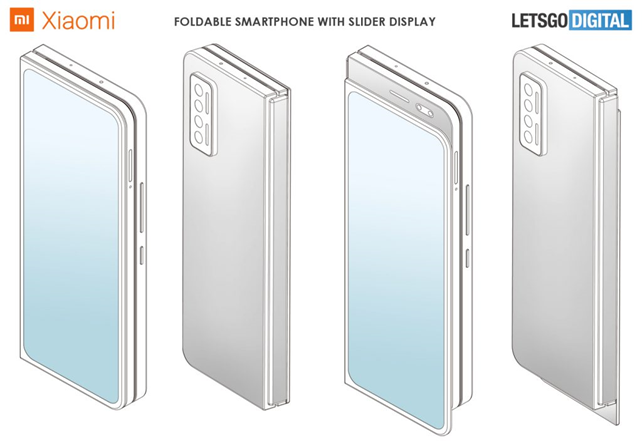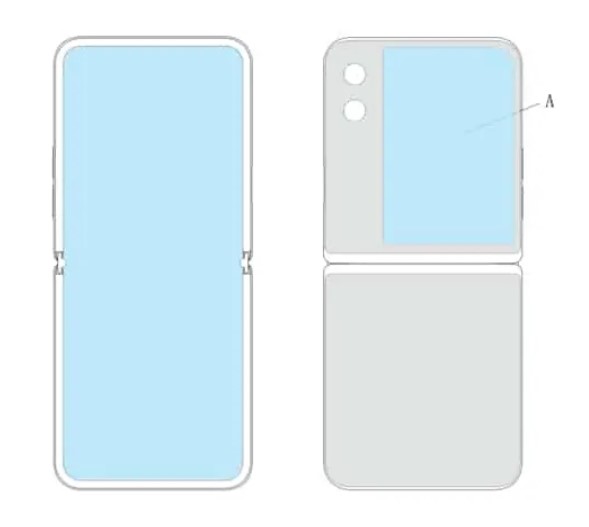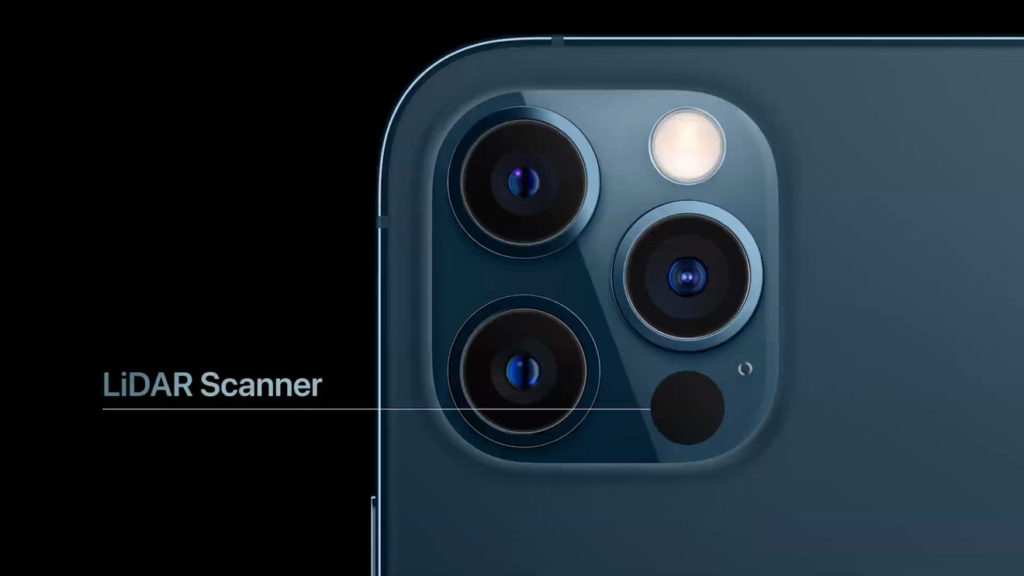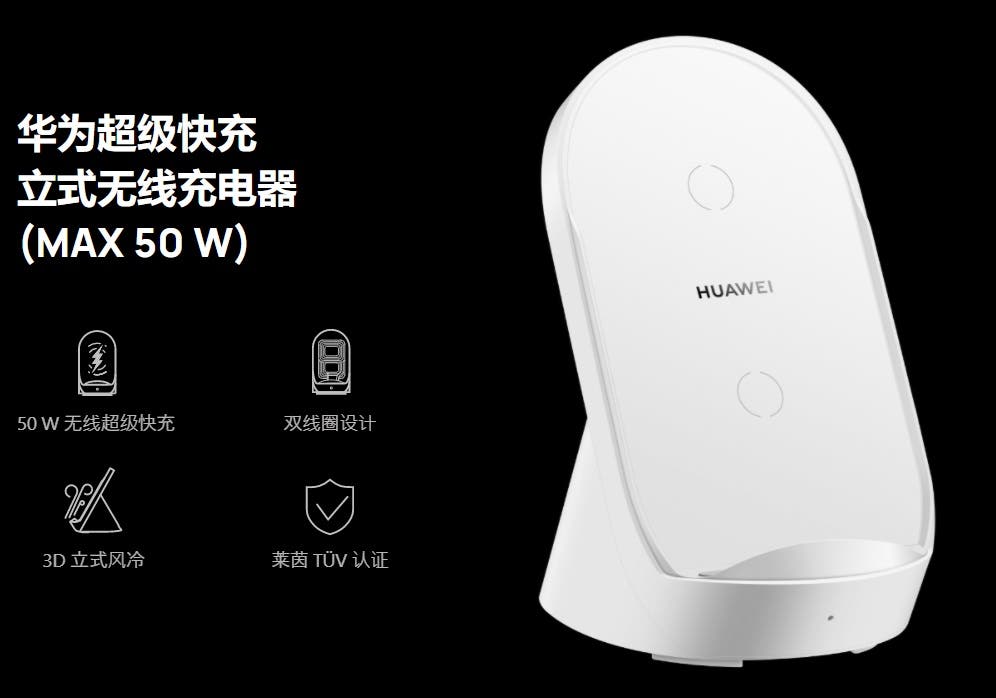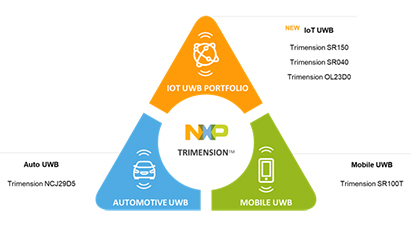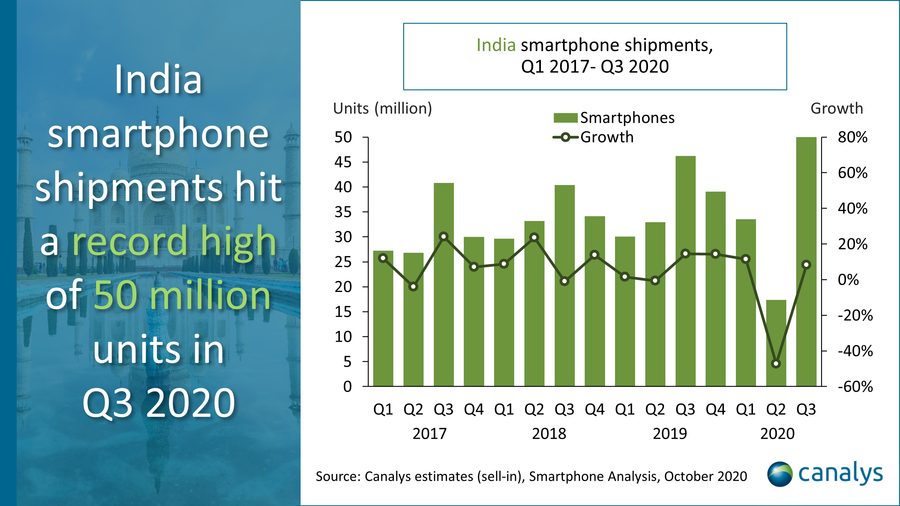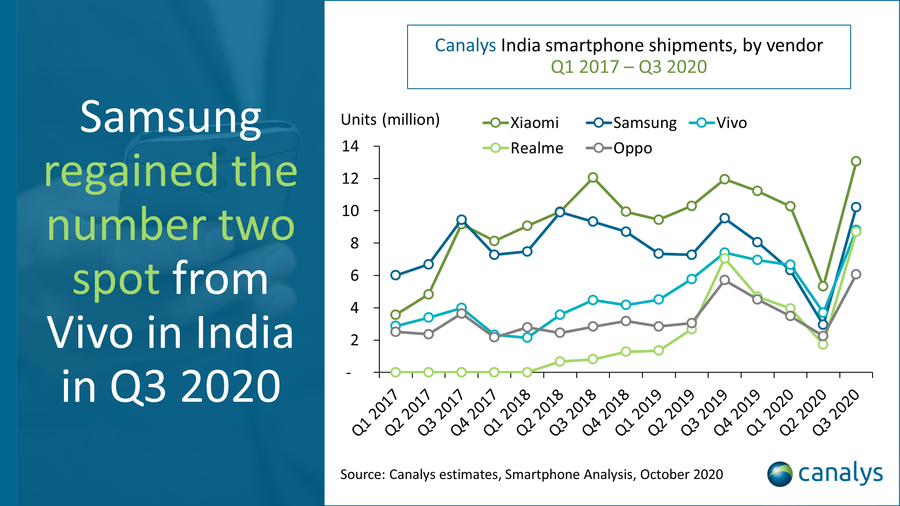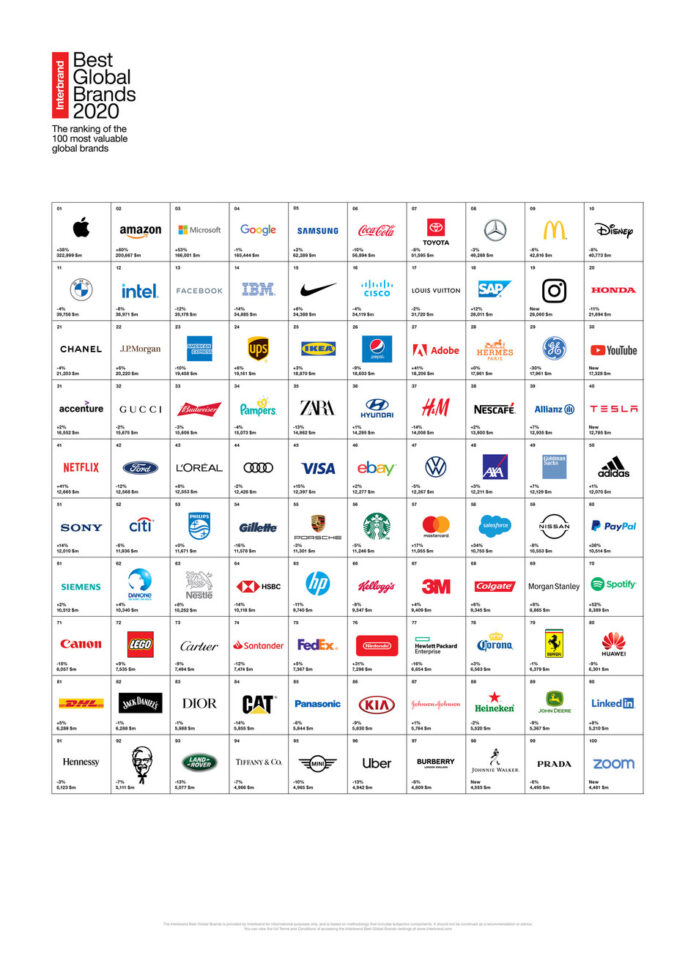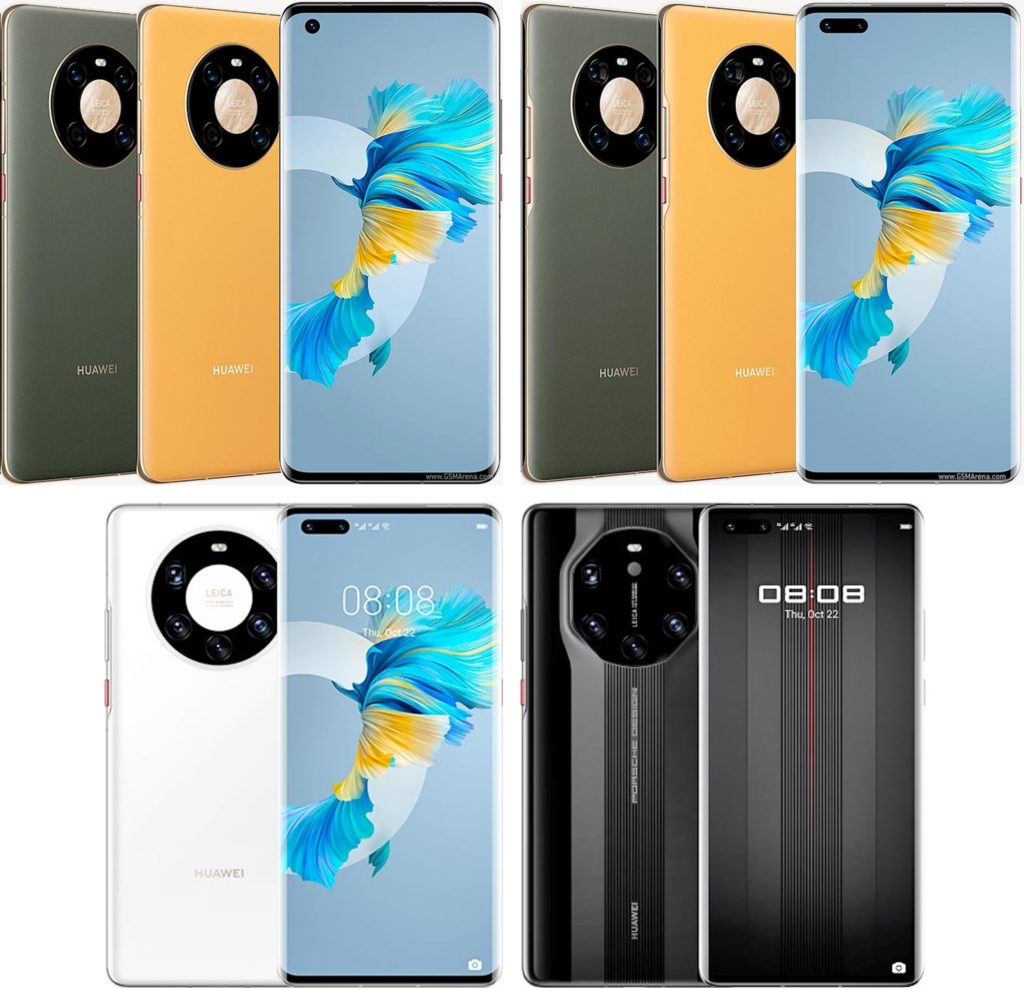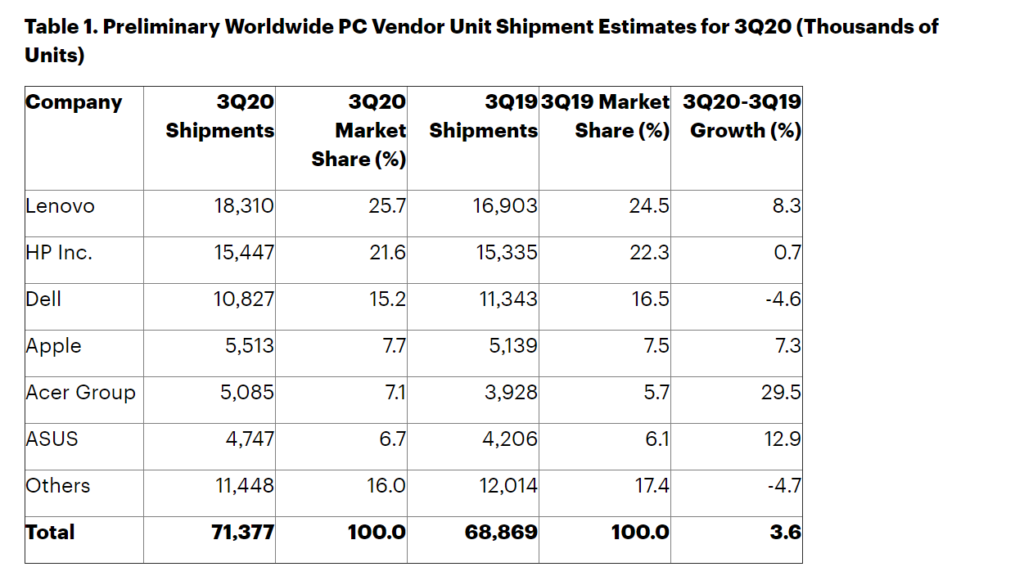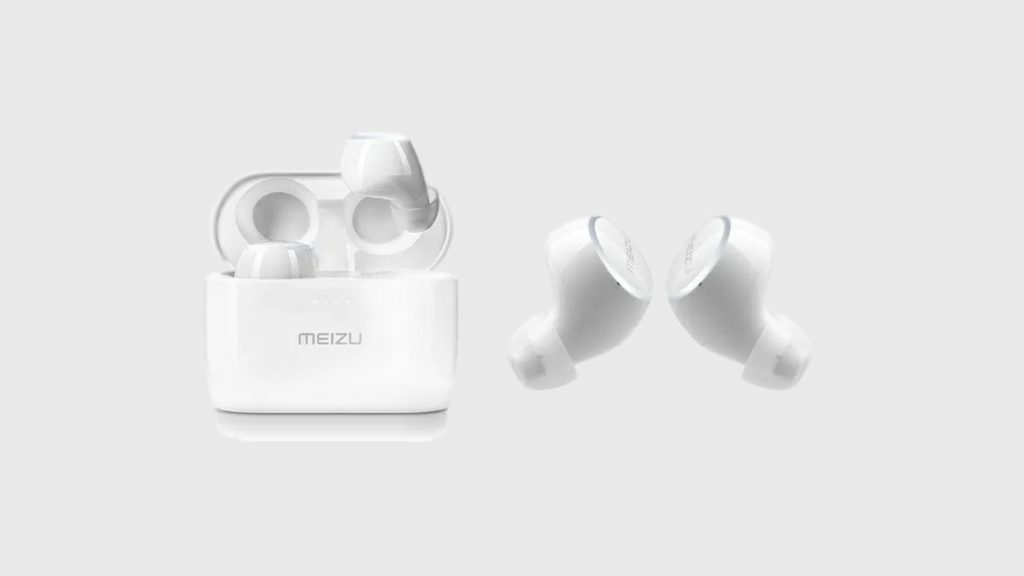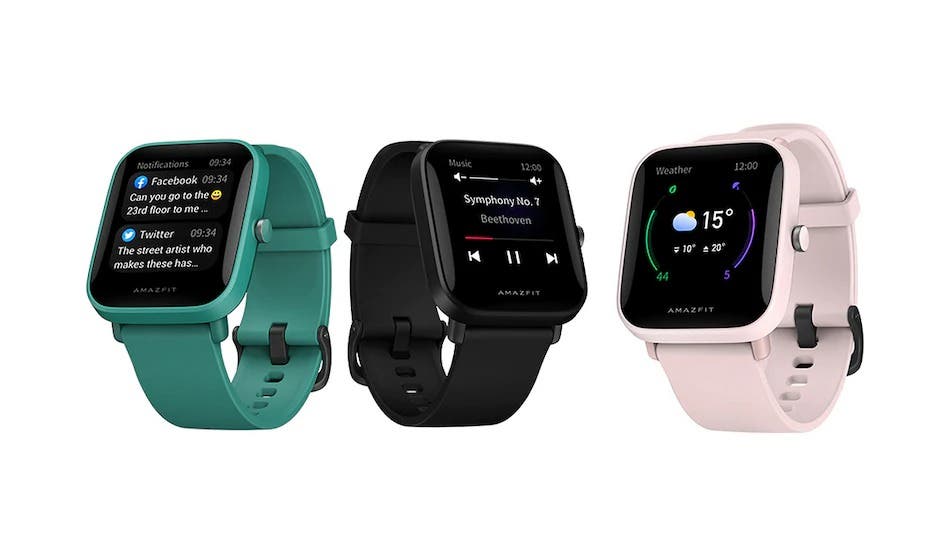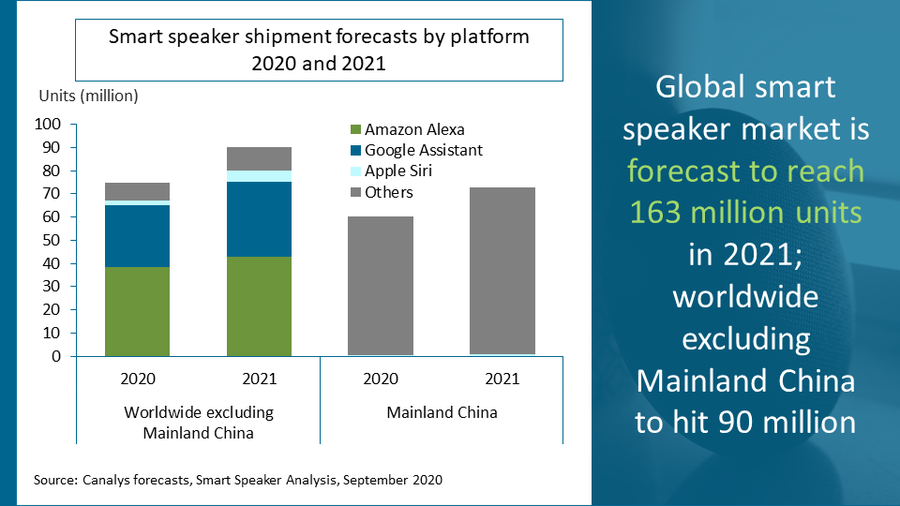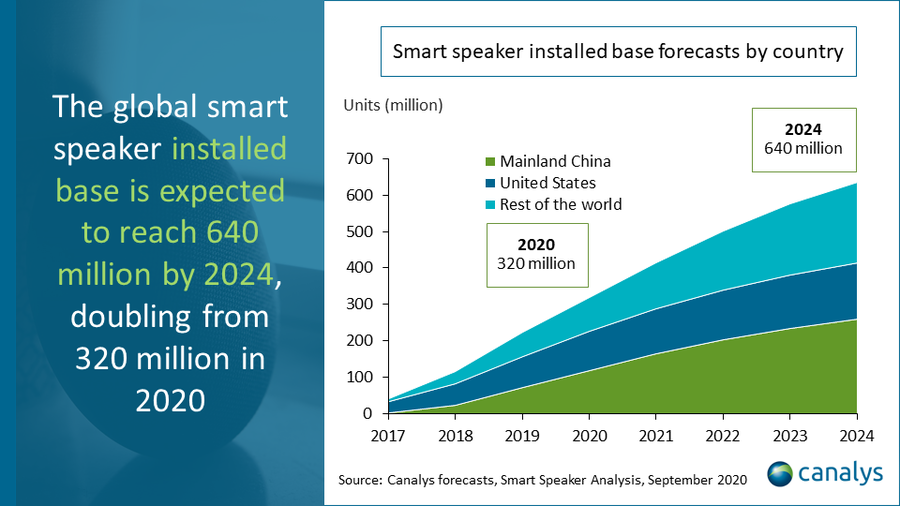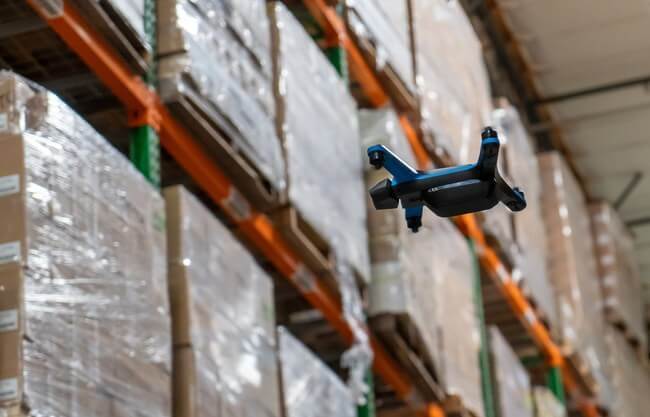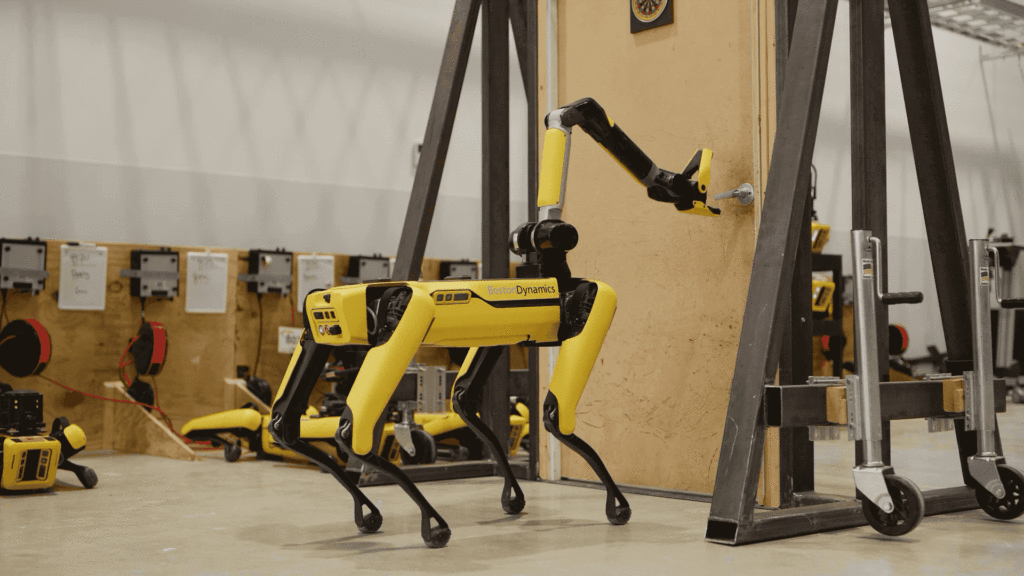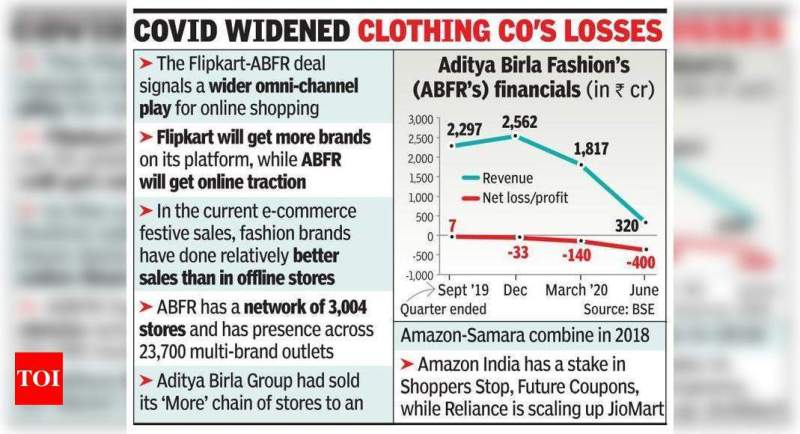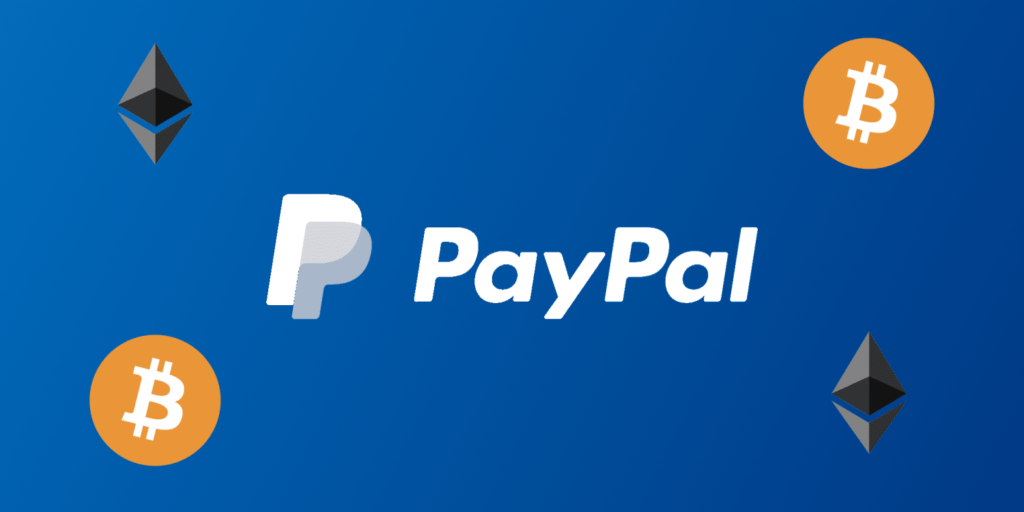
10-24 #Sparring: Intel’s own technology or a third-party foundry to manufacture its delayed 7nm chips will be decided by early 2021; Verizon has requested that Samsung Electronics not use Chinese components; etc.
Whether Intel taps the company’s own technology or a third-party foundry to manufacture its delayed 7nm chips will be decided by early 2021, according to company CEO Bob Swan. According to Swan, Intel plans to decide the matter using three main criteria: schedule predictability, product performance, and economics with the supply chain. (CN Beta, PC Gamer, PC Mag)
Huawei unveils the Kirin 9000 and Kirin 9000E chipsets, both chipset built on TSMC’s 5nm architecture. The new processor is said to have more than 15.3B transistors. The processor packs a 3-level power efficiency architecture with cores running at clock frequencies of up to 3.13GHz. The CPU part has eight cores, including a 3.13GHz Cortex-A77 large core, three Cortex-A77 medium cores each clocked at 2.54GHz. The SoC also has four Cortex-A55 small cores clocked at 2.04GHz each. (Gizmo China, Android Authority, AnandTech, My Drivers, Sina)
Xiaomi has filed a patent with China National Intellectual Property Administration (CNIPA) describing an inward foldable smartphone design with a slider cover display. The inward folding display does not have any notch or punch hole. (Gizmo China, Laoyaoba, LetsGoDigital)
China Star Optoelectronics Technology (CSOT) plans to start building a new 8.5G fab in Guangzhou in 2021 for production of inkjet-printed OLED panels, with volume production likely to kick off in 2024. (51Touch, Digitimes, Sohu)
Huawei has published a patent with the CNIPA (China National Intellectual Property Administration) indicating that the company could be working on a clamshell foldable phone with a secondary display on the back. (Android Headlines, Tiger Mobiles)
Apple iPhone 12 Pro is equipped with a LiDAR scanner, which can measure the time it takes for the laser to bounce back after touching an object. This LiDAR is designed and developed in cooperation with Apple and its CMOS chip supplier Sony. Although Apple has strong bargaining power, the price of this LiDAR also exceeds USD30. (Laoyaoba, Sohu, Ars Technica)
Huawei has released a 50W super-fast vertical wireless charger. The charger has a built-in intelligent silent fan, which can intelligently adjust the fan speed during the day and automatically switch to the super silent mode at night. The built-in high-efficiency centrifugal fan can increase the air volume by 50%. (GizChina, IT Home)
Ji Dong-seop, CEO of the Battery Division at SK Innovation, has revealed that the company is considering spinning off its electric vehicle battery business from the financial perspective. He has also indicated that SK Innovation was also considering building more battery plants in the United States. The company is currently building a battery plant in Georgia of the United States, which is scheduled to go live in 2021 and starts volume production of batteries in 2022. (Laoyaoba, Business Korea)
Samsung SDI may announce a plan to build an electric vehicle battery manufacturing plant in Vietnam. At present, Samsung SDI has no battery production lines in Vietnam although it has local assembly lines for mobile phone battery assembly and supply to Samsung Electronics Vietnam. Samsung SDI recently initiated manufacturing facility expansion in Hungary in order to double its production lines to eight. (Laoyaoba, Business Korea)
OPPO launches a new self-developed high-precision positioning algorithm Real-time Kinematic Positioning (RKP) that enables the phone navigation system to provide precise location within a 1m distance radius. The new positioning technology is based on carrier phase measurement and it processes the data obtained between measuring stations in real time to deliver precise positioning. (Gizmo China, GizArena, Sina, IT Home)
Verizon has expanded its partnership with Niantic, the developer of Pokémon GO. The companies have teamed with industry leaders to create a new planet-scale platform that paves the way for immersive AR experiences on 5G, and are offering wireless customers access to limited events and rewards so trainers can experience Pokémon GO like never before. (Phone Arena, Verizon)
NXP CEO, Kurt Sievers, demonstrates how ultra-wideband (UWB) technology precisely tracks objects. Trimension is introduced under the new brand name NXP offering one of the broadest UWB portfolios available with tailored sensing solutions for vehicles, smartphones, and IoT devices. NXP has expanded its portfolio to include new UWB ICs. Trimension SR040 and SR150 ICs are optimized to enable new IoT use cases. (BIS Infotech, Yahoo, Laoyaoba)
US carrier Verizon has requested that Samsung Electronics not use Chinese components related to their recent KRW7.9T (about UD6.7B) network kit supply deal, people familiar with the matter said. South Korean printed circuit board (PCB) maker Isu Petasys is aiming to become a replacement supplier for PCBs that were previously supplied by Chinese companies. Samsung Network have previously used PCB made by Chinese companies SCC and Wus for its network kits. South Korean PCB maker Daeduck Electronics is also a supplier. (Laoyaoba, The Elec, Sohu)
According to Canalys, smartphone shipments in India recovered in 3Q20, posting 8% growth to 50M units. This is an all-time record for smartphone shipments in a single quarter in India. Xiaomi remained the market leader, growing 9% to ship 13.1M units. Samsung regained second place from vivo, with 10.2M units, up 7%. (Canalys, CN Beta)
In the Intebrand’s Best Global Brands 2020, Amazon, Spotify and Netflix are among the biggest risers in ranking amid global COVID-19 lockdowns. Microsoft overtakes Google, to enter top 3. New entrants for 2020 include Instagram (#19), YouTube (#30) and Zoom (#100); re-entrants include Tesla (#40) and Johnny Walker (#98). Tech dominates the top 10, with a top 3 of Apple (#1), Amazon (#2) and Microsoft (#3). Technology is the fastest growing sector, while retail struggled amid a global pandemic. (CN Beta, Gizmo China, PR Newswire)
Huawei Mate 40 series is announced in Europe, without GMS: Mate 40 – 6.5” 1080×2376 FHD+ OLED HiD HDR10+ 90Hz, Kirin 9000E 5G, rear tri 50MP-8MP telephoto OIS-16MP ultrawide + front 13MP, 8+128GB, Android 10.0, fingerprint on display, 4200mAh 40W, IP68 rated, EUR899. Mate 40 Pro – 6.76” 1344×2772 QHD+ OLED 2xHiD HDR10+ 90Hz, Kirin 9000 5G, rear tri 50MP-12MP periscope telephoto 5x optical zoom OIS-20MP ultrawide + front dual 13MP-3D ToF, 8+256GB, Android 10.0, fingerprint on display, 4400mAh 66W, 50W wireless charging, 5W reverse wireless charging, IP68 rated, EUR1,199. Mate 40 Pro+ – 6.76” 1344×2772 QHD+ OLED 2xHiD HDR10+ 90Hz, Kirin 9000 5G, rear penta 50MP OIS-12MP telephoto 3x optical zoom OIS-8MP periscope 10x optical zoom OIS-20MP ultrawide-3D ToF + front dual 13MP-3D ToF, 12+256GB, Android 10.0, fingerprint on display, 4400mAh 66W, , 50W wireless charging, 5W reverse wireless charging, IP68 rated, EUR1,399. Mate 40 RS Porsche Design – 6.76” 1344×2772 QHD+ OLED 2xHiD HDR10+ 90Hz, Kirin 9000 5G, , rear penta 50MP OIS-12MP telephoto 3x optical zoom OIS-8MP periscope 10x optical zoom OIS-20MP ultrawide-3D ToF + front dual 13MP-3D ToF, 12+512GB, Android 10.0, fingerprint on display, , 4400mAh 66W, , 50W wireless charging, 5W reverse wireless charging, IP68 rated, EUR2,295. (GSM Arena, CN Beta, Pocket-Lint, Android Central, My Drivers, GSM Arena, Pocket-Lint)
Worldwide PC shipments totaled 71.4M units in 3Q20, a 3.6% increase from the third quarter of 2019, according to Gartner. Consumer demand for PCs due to home entertainment and distance learning needs during the ongoing pandemic, along with the strongest growth the U.S. PC market has seen in 10 years, drove the global market momentum. (CN Beta, Gartner)
Meizu POP2s true wireless headset is released, priced at CNY299 (USD45). It adopts a new double-layer structure composite diaphragm design. It has a sufficiently open sound field performance, with far, near, and directional modes. (GizChina, CN Beta, Gizmo China)
Huami Amazfit Pop is official for CNY349 (USD52). It features 1.43” 320×302 HD colour display, up to 50m water resistance, 225mAh battery. Apart from the normal heart, calorie, and step counter, it can even measure distance, speed, SpO2 blood oxygen detection, and much more. (GizChina, Android Authority, IT Home)
The latest Canalys forecast expects the global smart speaker market, including smart displays, to reach 163M units in 2021, a growth of 21%. In 2020, Mainland China, which has the COVID-19 pandemic under control, will lead, growing 16%, while the rest of the market is expected to grow 3% as countries continue to battle the coronavirus. (CN Beta, Canalys)
San Francisco-based startup, Ware has developed systems that use flying drones to keep track of inventory in warehouses. Ware incorporates autonomous Skydio 2 quadcopters that charge their batteries while roosting on a “nest” in the warehouse. Following a preprogrammed schedule, they regularly take off and fly along the stacked rows of pallets – going both back-and-forth and up-and-down – returning to the nest when they are done. (New Atlas, SUAS News, CN Beta)
Boston Dynamics’ new CEO Rob Playter has revealed that the company has now sold around 260 of its sophisticated Spot robot. Boston Dynamics is also actively developing its own accessories to help diversify Spot’s applications. The company recently announced that it would be offering an arm add-on capable of performing a wide variety of tasks, including opening doors and picking up objects. (TechCrunch, Engadget, TechXplore)
Facebook AI and the Carnegie Mellon University (CMU) Department of Chemical Engineering are announcing the Open Catalyst Project, a collaboration intended to use AI to accelerate quantum mechanical simulations by 1,000x in order to discover new electrocatalysts needed for more efficient and scalable ways to store and use renewable energy. Facebook is developing AI that will accurately predict atomic interactions dramatically faster than the compute-heavy simulations scientists rely on today. (CN Beta, Facebook, Utility Drive)
Flipkart is acquiring a 7.8% stake in Aditya Birla Fashion. The e-commerce group will pay INR1,500 crore (USD203.8M) for its stake in Aditya Birla Fashion and Retail, a conglomerate that operates over 3,000 stores, including the Pantaloons clothing chain. As part of the “landmark” strategic partnership, Flipkart will also sell and distribute various brands of Aditya Birla Fashion and Retail. (TechCrunch, India Times, Live Mint)
PayPal’s new cryptocurrency service will launch in the U.S. in the coming weeks and features bitcoin, ethereum, bitcoin cash and litecoin. By early 2021, the company also plans to let customers use crypto to pay for things from its network of 26M retailers. The announcement comes as more financial institutions signal their entry into the nascent cryptocurrency market. (GizChina, CNBC)
Ethereum-based marketplace Zora has raised USD2M in a seed funding round led by venture capital fund Kindred Ventures. The Zora marketplace is meant to enable fashion brands and musicians to launch products in a tokenized form. Brands can generate revenue based on different product demands, and items are tokenized and sold on a bonding curve. (TechCrunch, Crypto Fund Report, The Block)


